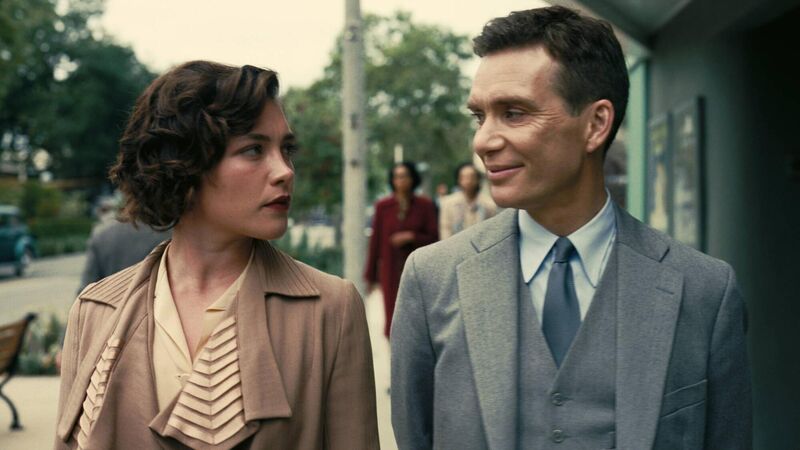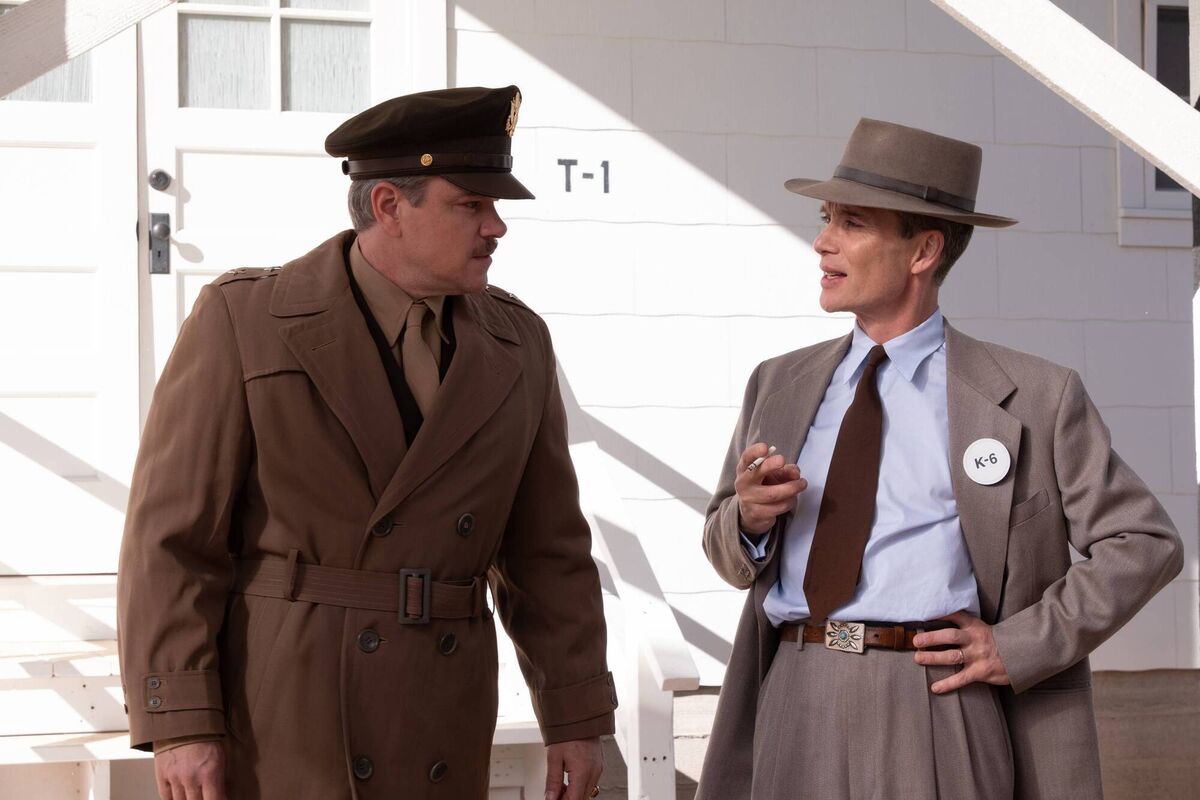Oppenheimer review: Cillian Murphy is simply superb in this complex, many-layered biopic

Florence Pugh as Jean Tatlock and Cillian Murphy as J. Robert Oppenheimer. Picture: © Universal Pictures
★★★★☆
Christopher Nolan’s Oppenheimer (15A) stars Cillian Murphy as J. Robert Oppenheimer, the ‘American Prometheus’ and ‘the Father of the Atomic Bomb’. Neither description, of course, nor both combined, tell the full story: the film – written by Nolan, Kai Bird and Martin Sherwin – opens in the 1920s with a young Oppenheimer inspired to explore the bizarre new world of quantum physics, which give rise to ‘troubled by visions of a hidden universe’.
Alas, the hidden universe is not the only source of Oppenheimer’s troubles, many of which are self-inflicted: an inveterate womaniser, a Communist ‘fellow traveller’ in the years leading up to WWII, the brilliant physicist is a brash idealist.

Framed as an investigation into Oppenheimer’s patriotic credentials as the Cold War heats up, the story veers from the personal – his tempestuous marriage to Kitty (Emily Blunt) and his affair with Jean Tatlock (Florence Pugh) – to the political – a love-hate relationship with his mentor, Lewis Strauss (Robert Downey Jr.) that goes sour in McCarthy-era America – and into the realms of theoretical science via his work with Albert Einstein (Tom Conti) and Niels Bohr (Kenneth Branagh), among many others.
It’s a complex, many-layered biopic that investigates Oppenheimer’s morality in terms of his responsibility for the creation of the ultimate weapon of mass destruction, although in this, as in virtually every other aspect of Oppenheimer’s life, there are no easy answers.

Cillian Murphy is simply superb in the role of ‘the Sphinx-like guru of the atom’, a mesmerising blend of arrogance, self-doubt and generation-defining genius, and while Emily Blunt and Florence Pugh are given very little to work with, Robert Downey Jr. provides strong support as the grasping politician Lewis Strauss.
It’s a powerful, absorbing film that is surprisingly light on scientific insight; that said, the extended sequence in which the first atomic bomb is detonated at Los Alamos is worth the price of admission alone.
(cinema release)


